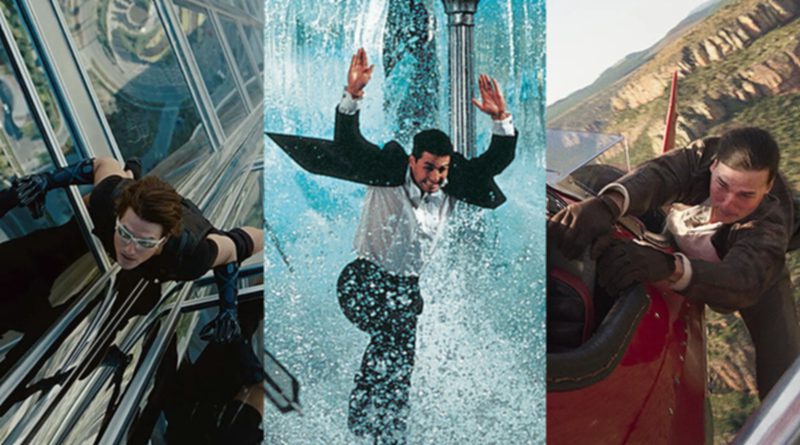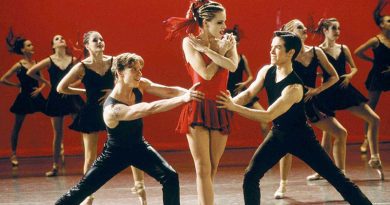All Mission: Impossible Movies including The Final Reckoning, Ranked
The Mission: Impossible movie series is one of the most consistently entertaining franchises, lasting almost thirty years since its inception in 1996. Each movie is helmed by different directors, from Brian De Palma to John Woo, J.J. Abrams, Brad Bird, and Christopher McQuarrie, allowing them to put their directorial stamps while retaining the essence of its spy-action tropes.
With The Final Reckoning finally out, here are the eight Mission: Impossible movies — yes, that includes the latest one — all ranked, from worst to best.
Mission: Impossible II (2000)

The Mission: Impossible franchise ushered in the 2000s with a more operatic, yet showier sequel to Brian De Palma’s intricate Hitchcock-heavy 1996 original. Directed by John Woo, Mission: Impossible II — stylised as M:I-2 — was among the highest-grossing movies in the franchise and even upstaged the first movie. Woo’s penchant for romanticising the action genre and, in this case, a spy action-thriller heavily skewed to romance between Tom Cruise’s Ethan Hunt and Thandiwe Newton’s Nyah Nordoff-Hall, resulted in a hit-or-miss affair.
The story is rather heavy-handed in its approach, even though Woo deserves credit for his crafty bait-and-switch moment. But frankly, the best scene only comes alive during the action-packed third act. And here is where Woo goes all out with his signature stylised slow-motion action set pieces, from the thrilling motorcycle chase to Ethan Hunt vs. Dougray Scott’s Sean Ambrose showdown.
Mission: Impossible – Dead Reckoning (2023)

Compared to Christopher McQuarrie’s Rogue Nation and Fallout, his third go-around is rather lacklustre. He tries to keep the franchise fresh and relevant by incorporating a story about the A.I. takeover, but the introduction of The Entity isn’t as formidable as I thought. Dead Reckoning also throws in a human antagonist in the form of Esai Morales’ Gabriel, but he’s nothing more than a standard-issue villain. Not to mention, a far cry from what I’ve seen McQuarrie do better in his first two movies, notably Sean Harris as Solomon Lane.
The story stretches too long for its own good, which doesn’t justify its bloated 163 minutes. But then again, Dead Reckoning still fulfils the franchise’s important wow factor: the action sequences. McQuarrie gears up with one impressive set piece after another, including the Rome-set car chase and the climactic train sequence aboard the Orient Express. Then, there’s Cruise’s heavily publicised daring motorcycle cliff jump, which looks immersively spectacular watching the scene on IMAX.
Mission: Impossible – The Final Reckoning (2025)

After nearly 30 years since the 1996 original, the Mission: Impossible franchise finally comes to an purportedly end in The Final Reckoning, culminating in Ethan Hunt’s tireless fight “for the greater good”. A direct follow-up to Dead Reckoning, the movie clocks in even longer at almost three hours. It suffers from a bloated runtime that could have benefited from a tighter edit. Christopher McQuarrie significantly toned down the big action moments, giving us only two major set pieces.
But at least, they are worth the wait: Ethan’s deep dive into the sunken Russian submarine, and the spectacular plane stunt that it’s a must-watch on IMAX. The Final Reckoning is also noticeably solemn but at least McQuarrie doesn’t turn this into an entirely joyless ride.
Mission: Impossible III (2006)

J.J. Abrams took a quantum leap from television (Alias, Lost) to the big screen for the first time, and he does a good job here, despite the third movie being the lowest-grossing movie in the franchise. Mission: Impossible III gets more personal with Ethan Hunt now having a fiancée (Michelle Monaghan’s Julia Meade), which injects the movie with a much-needed palpable stakes, given the risk and liability of an agent getting into a relationship. This, in turn, adds a sense of vulnerability to Ethan Hunt’s otherwise acute IMF agent.
The third movie also gets a boost from Philip Seymour Hoffman playing the uncompromising arms dealer Owen Davian, still the best and most formidable antagonist in the franchise. The action is competently directed, even though not as spectacular as the rest of the movies in the franchise. Still, Abrams manages to show some flair in executing a few major set pieces, from the elaborate Vatican moment to the Chesapeake Bay Bridge ambush.
Mission: Impossible – Rogue Nation (2015)

The fifth instalment lands Christopher McQuarrie, with whom Tom Cruise worked before in Jack Reacher. The result? One of the best Mission: Impossible movies ever made, boasting a high-stakes story and action set pieces. Rogue Nation introduces the no-nonsense Solomon Lane, played by Sean Harris to sinister perfection, and not to forget, Rebecca Ferguson’s sneaky femme fatale Ilsa Faust, which proves to be a worthy addition. She even steals most of the show here.
The pace is consistent, and kudos go to McQuarrie and Cruise for upping the ante by elevating the franchise with some of the best action and stunts. Ethan Hunt clinging to the side of the plane during takeoff? Now, that’s a death-defying move since Cruise does it for real without a green screen. The extended Morocco-set chase sequence is equally worth mentioning before culminating in a high-speed motorcycle pursuit on a winding road.
Mission: Impossible – Ghost Protocol (2011)

Brad Bird’s background in animation, such as The Iron Giant and The Incredibles, proves to be the right fit for a Mission: Impossible movie, marking his live-action directorial debut in Ghost Protocol. Bird’s sense of brisk pacing, along with his genre know-how direction in handling a spy action thriller, elevates the fourth movie. From the opening prison escape to the climactic third act on the Mumbai-set, multi-level automated parking garage, Bird amps up the excitement throughout the movie.
The best scene, of course, comes from the daring set pieces of Ethan Hunt scaling the heights of the towering Burj Khalifa in Dubai. What’s great is the way Brad elaborates the whole Dubai scene, culminating in a car chase through the sandstorm. Credits also go to Bird for giving the characters enough room to shine, while new additions, including Jeremy Renner and Paula Patton as Ethan’s IMF team members, all deserve equal mention.
Mission: Impossible – Fallout (2018)

Mission: Impossible – Fallout marks the second time that Christopher McQuarrie has a go at the franchise. He continues to elevate the Mission: Impossible movie with an even better follow-up to his already-spectacular Rogue Nation.
His assured direction soars through the movie’s epic 147-minute running time, packed with enough dramatic tension, while the cast is just as incredible. McQuarrie outdoes himself again with his deceptive storytelling that echoes The Usual Suspects at one point in the movie.
Not to mention, some of the most thrilling action set pieces ever seen on the big screen. From the spectacular HALO jump to the three-way bathroom fight between Ethan and Henry Cavill’s August Walker against the highly nimble assailant played by Liang Yang, where the latter recalls the style of an old-school Hong Kong action movie. And it gets better from here with the elaborate Paris-set motorcycle chase and the climactic helicopter pursuit.
Mission: Impossible (1996)

It’s easy to forget that Mission: Impossible got its start with a different kind of big-budget Hollywood blockbuster. One that isn’t significantly heavy on action and stunts, but more focused on the labyrinthine storytelling. With Brian De Palma on the helm, whose influence on Alfred Hitchcock is put to crafty use. The first movie gets off to a gripping start with the extended Prague scene of Ethan Hunt and his IMF team being assigned to retrieve the all-important CIA’s NOC list, only to find themselves falling prey to an ill-fated domino-like result.
Tom Cruise’s boyish, movie-star charm is a perfect fit to play a then-young, reckless but quick-witted IMF agent, Ethan Hunt. Some of the scenes may have been dated (e.g. the sight of the floppy disc), but the first Mission: Impossible still impresses in many key moments. This includes the scene where Ethan and his team infiltrate the highly secured CIA vault — easily the most suspenseful moment ever staged in a Mission: Impossible movie. The movie ends with an action-packed finale, which serves as a precursor of how death-defying, over-the-top stunts would dominate the franchise: a scene on the roof of the high-speed TGV bullet train and a helicopter navigating inside the tunnel.
Mission: Impossible may have divided fans and audiences with De Palma’s penchant for turning his story into a complex structure. Personally, this is where the first movie excels the most, offering us what it’s like to have a thinking man’s Hitchcock-type spy thriller within the modern action-movie blockbuster mould.




